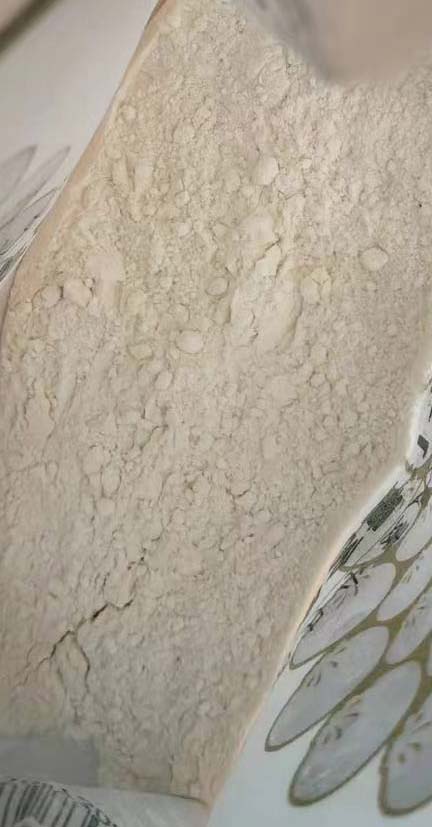SHMP
What is Sodium Hexametaphosphate?
Sodium hexametaphosphate is a salt with the chemical composition typically found as a mixture of metaphosphates in commerce. SHMP serves as a sequestrant that facilitates the hydration of gelling agents at significantly lower temperatures.
SHMP proves its significance by stabilizing emulsions and enhancing corrosion inhibition in the realm of paint and coating. In the production process, it functions as a dispersing agent, influencing pigment particles and elevating product protection attributes. As a dispersing agent in paint and coatings, SHMP plays a pivotal role. Coatings, encompassing resins, oils, emulsions, pigments, fillers, and additives, rely on these chemicals to heighten visual appeal. SHMP’s capability to absorb water renders it viscous, further amplifying its dispersing efficacy while effectively complexing calcium and magnesium ions in the paint.
Apart from its role in coatings, SHMP serves as a multifunctional agent. It finds usage as a water softener, deflocculating agent, antiscale agent, floatation/coating agent, and dispersing agent. In the paint and coating industry, Hexametaphosphate serves to stabilize emulsions and improve corrosion inhibition, offering coatings enterprises the opportunity to enhance product quality and expand their market presence by incorporating technical grade SHMP.
Product Description of SHMP
Sodium Hexametaphosphate is a white powder, miscible in water yet insoluble in organic solvents, showcases exceptional versatility. Its appearance is characterized by the presence of slightly colorless or white crystals, which, when subjected to light, exhibit a translucent or transparent quality.
Sodium Hexametaphosphate lacks any discernible characteristic odor, ensuring its compatibility with various formulations and applications. Its refractive index, a measure of how light is refracted upon passing through the substance, is registered at 1.482. The Sodium hexametaphosphate’s pH value distinguishes it from neutral water. With a slightly higher pH value of 8.6, Sodium Hexametaphosphate exhibits a subtle alkaline nature.
Benefits
Within the paint and coating industry, Hexametaphosphate serves as a remarkable agent that brings about both stabilization of emulsions and the improvement of corrosion inhibition. SHMP maintains the homogeneity and consistency of mixtures containing immiscible components. This is particularly significant in paint and coating formulations, where the amalgamation of diverse ingredients, such as resins, pigments, and additives, is essential for achieving desirable visual and protective properties.
The application of coatings on various surfaces, such as metal structures and equipment, is undertaken with the primary goal of preventing corrosion and deterioration. Sodium hexametaphosphate’s role in improving corrosion inhibition ensures that coatings remain resilient in the face of environmental factors, thereby extending the lifespan of coated materials and structures.
Chemical Formula
The chemical formula of Sodium Hexametaphosphate, often denoted as (NaPO3)6, succinctly encapsulates the compound’s molecular composition. Comprising sodium ions and phosphate units, this formula signifies the arrangement of atoms within the compound. Sodium Hexametaphosphate consists of six phosphate groups linked to a central sodium ion.
What is SHMP used for?
SHMP serves as an essential tool for stabilizing emulsions. Emulsions are complex mixtures of immiscible components, such as water and oil, that require meticulous balance to ensure consistency and uniformity. SHMP’s ability to stabilize emulsions ensures that these formulations remain homogeneous, preventing separation and maintaining the desired attributes of the coating. This aspect is of paramount importance in the production of high-quality coatings, where uniform distribution is critical for achieving consistent visual and protective properties.
Another crucial function of SHMP in the paint and coating industry is its role in enhancing corrosion inhibition. The application of coatings serves as a barrier against corrosion, protecting underlying surfaces from the deleterious effects of environmental factors. By incorporating SHMP into coating formulations, the compound contributes to the formulation’s capacity to withstand corrosion and deterioration. This is particularly valuable for applications involving metals and structures exposed to varying degrees of moisture and corrosive agents.
SHMP also serves as a dispersing agent. This function entails influencing the distribution of pigment particles within the formulation. By promoting the even dispersion of pigments, SHMP contributes to the uniform coloration and aesthetic appeal of the final product. Furthermore, this dispersion action enhances the protective properties of the coating, as uniform pigment distribution aids in achieving consistent coverage and effectiveness.
What is the Purpose of Adding Sodium Hexametaphosphate?
The incorporation of SHMP is particularly important in contexts where sedimentation solutions are involved. One of the primary objectives of adding SHMP to such solutions is to counteract the tendency of clay platelets to adhere to one another.
In sedimentation solutions, especially those containing clay particles, the propensity for these particles to agglomerate and form larger clusters can hinder the desired separation or settling process. This can result in inefficient sedimentation, impeding the desired outcomes of procedures such as clarification or purification. The addition of Hexametaphosphate addresses this challenge by exerting its dispersing properties.
SHMP acts as a dispersing agent, exerting a repelling force between individual clay particles. This electrostatic repulsion prevents the particles from coming into close contact and forming cohesive aggregates. The clay platelets remain more evenly distributed within the solution, facilitating improved settling and separation.
Packaging & Storage
The proper packaging and storage of Sodium hexametaphosphate are integral aspects to ensure its quality and performance are maintained over time. To safeguard the quality of SHMP, it is imperative to store it in a cool and dry environment. Exposure to excess humidity or moisture can potentially compromise the compound’s chemical properties and lead to clumping or caking.
Optimal storage conditions for Hexametaphosphate entail maintaining a storage temperature within the recommended range of 15 to 25 degrees Celsius. This temperature range recommended by Tripletcehm strikes a balance between preventing extreme temperature fluctuations that could impact the compound’s stability and ensuring the avoidance of excessively high temperatures that might trigger degradation.
Why Use SHMP in Paint?
One of the primary reasons for incorporating Hexametaphosphate into paint formulations is its remarkable ability to When SHMP is added to paint formulations containing water glass and other alkaline substances, the resultant pH level of the paint falls within the range of 10 to 10.5. This pH range indicates the alkaline nature of the paint, which can have implications for various characteristics, including paint stability and reactivity.
A critical factor affected by the content of Sodium hexametaphosphate in paint is brushability, which pertains to the ease with which paint can be applied using brushes or other applicators. As the concentration of SHMP in the paint increases, the impact on brushability becomes increasingly evident. At around 2% SHMP content, the paint exhibits enhanced fluidity, contributing to smoother application. However, this can lead to visible flow marks and a compromised final appearance after painting, indicating the complex interplay between SHMP and other components in the formulation.
The concentration of SHMP has a direct influence on the viscosity of the paint. As the Hexametaphosphate content reaches approximately 6%, the paint undergoes a noticeable increase in viscosity, resulting in a thicker consistency. This change in viscosity can impact the spreadability and application properties of the paint, potentially affecting the ease with which it can be evenly distributed across surfaces.
Moreover, SHMP’s impact on corrosion inhibition is a key factor in its inclusion within paint formulations. Coatings serve as protective barriers against corrosion and deterioration, particularly in environments where exposure to moisture, chemicals, and other corrosive agents is prevalent. By incorporating Hexametaphosphate, paints gain the ability to bolster their corrosion resistance properties, ensuring that the underlying surfaces are shielded from the deleterious effects of environmental factors.
What is the Use of SHMP in Detergent?
As an emulsifier, SHMP plays a pivotal role in detergent formulations by facilitating the dispersion of oils and greases in water. This is particularly relevant in removing stubborn stains and dirt that are typically oil-based or greasy in nature. By aiding in the emulsification process, SHMP ensures that these hydrophobic substances are effectively broken down and dispersed in the aqueous solution, allowing for their subsequent removal during the washing cycle.
In addition to its emulsifying properties, Sodium hexametaphosphate functions as a sequestrant in detergents. Sequestrants are compounds that form stable complexes with metal ions present in water, effectively neutralizing their adverse effects on cleaning processes. In detergents, hard water can interfere with the efficacy of cleaning agents by forming insoluble complexes with soap molecules. SHMP’s sequestrant properties counteract this challenge by binding to metal ions, preventing their interference and enhancing the detergent’s ability to clean effectively.
Beyond its primary roles as an emulsifier and a sequestrant, SHMP also acts as a wetting agent. This wetting effect allows detergents to spread more evenly across surfaces, ensuring comprehensive coverage and facilitating the penetration of the cleaning solution into dirt and stains. This attribute further contributes to the overall efficiency of detergents.
Sodium hexametaphosphate,
This al additive has successfully become a pH regulator, joint agent, expansion agent, and quality improver in many formulations.insoluble in organic solvents chemichite powder, easily soluble in water. It is widely used as an additive in paint coatings and some foods.

